Click on images to enlarge
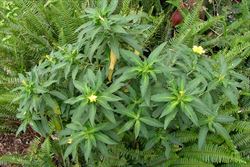
habit (Photo: Sheldon Navie)
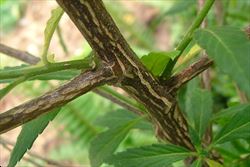
close-up of older woody stems (Photo: Sheldon Navie)
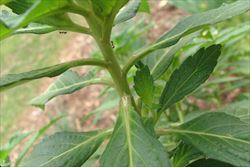
close-up of younger hairy stems (Photo: Sheldon Navie)

leaves and flowers (Photo: Chris Gardiner)
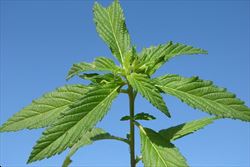
leaves (Photo: Chris Gardiner)
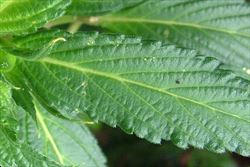
close-up of leaf, with finely-toothed margins (Photo: Sheldon Navie)
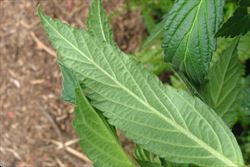
close-up of leaf underside (Photo: Sheldon Navie)
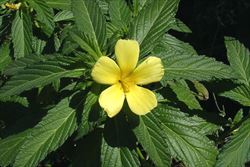
flower (Photo: Chris Gardiner)
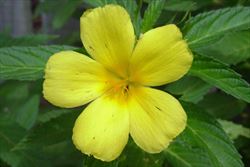
close-up of flower (Photo: Chris Gardiner)
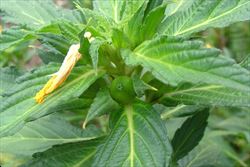
old flowers and immature fruit (Photo: Sheldon Navie)
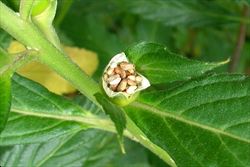
close-up of mature fruit with seeds (Photo: Sheldon Navie)
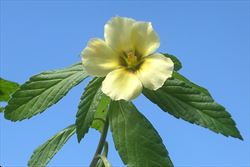
the very similar white alder, Turnera subulata (Photo: Chris Gardiner)
Scientific Name
Turnera ulmifolia L.
Family
Turneraceae
Common Names
buttercup flower, false damiana, ramgoat dashalong, sage rose, West Indian holly, yellow alder, yellow buttercups, yellow elder
Origin
Native to south-eastern USA (i.e. Florida), southern Mexico, Central America (i.e. Belize, Costa Rica, Honduras, Nicaragua and Panama) and the Caribbean.
Naturalised Distribution
This species is becoming widely naturalised in northern Australia. It is occasionally naturalised in the coastal districts of northern Western Australia, the Northern Territory and northern Queensland. It is also naturalised on Christmas Island and the Cocos Islands.
Naturalised overseas in Africa, Madagascar, the Mascarenes, south-eastern Asia (e.g. Indonesia and Malaysia), and Oceania (e.g. Fiji, Hawaii, Kiribati, the Marshall Islands, New Caledonia and Palau).
Notes
Yellow alder (Turnera ulmifolia) is regarded as a minor or emerging environmental weed in northern Western Australia, the Northern Territory and northern Queensland.

